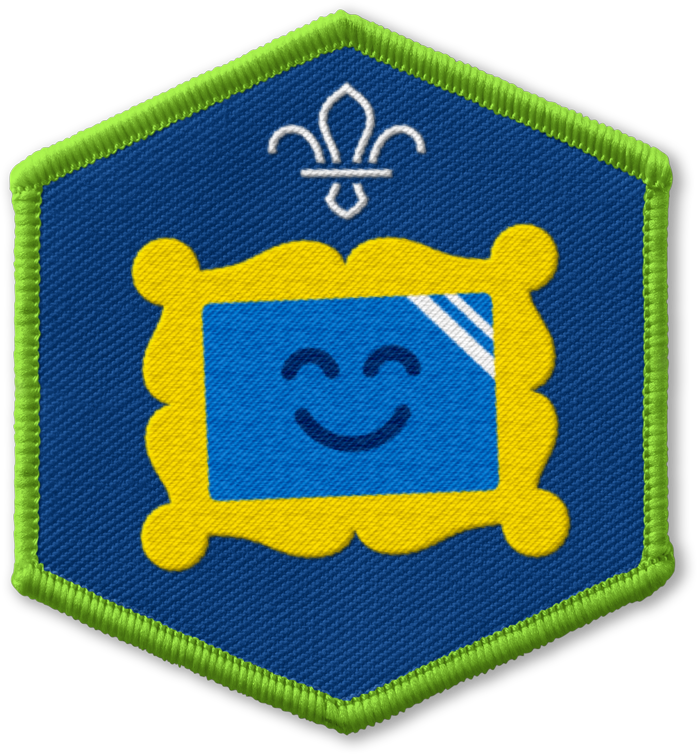
In the pond, out the pond
Before you begin
- Use the safety checklist to help you plan and risk assess your activity. There's also more guidance to help you carry out your risk assessment, including examples. Don’t forget to make sure all young people and adults involved in the activity know how to take part safely.
- You might want to write down what each call (for example, ‘in the pond’) means to put out to help people remember what action to do.
Play the game
- Everyone should sit in a circle. An adult volunteer or young leader should be the caller.
- Everyone else will need to sit in the circle with their hands on the tops of their thighs.
- The caller will say one of three things, in no particular order:
- ‘In the pond’ — everyone puts their hands forwards into the circle (the pond)
- ‘Out the pond’ — everyone puts their hands in the air above their heads
- ‘On the bank’ — everyone puts their hands on their thighs (the bank)
- Have a practice round and call out the actions, so everyone knows what they’re doing.
- Now, play the game. If anyone moves their hands to the wrong place or at the wrong time, then they’re out of the game and must sit on their hands.
- Keep going until there’s only one person left, who can be declared the winner!
Reflection
This game was all about having fun and thinking quickly. People had to remember the actions and do them as fast as they could, without making a mistake. Did people enjoy playing? What was easy? What was hard work?
You may have had ways to remember the action. Did you think of anything to make it easier? How did you think and react quickly? How would you play differently next time?
The people around you may have helped to. Was it hard to remember which way to go? Did you look to other people for guidance? Did anyone work together?
Was it difficult to keep up? What made it easier? People might’ve noticed that saying the actions out loud or keeping your arms loose and hands ready to move helped them react quickly.
Can anyone think of times outside the game when they’ve had to think or react quickly, or they’ve had to remember lots of things at once?
Safety
All activities must be safely managed. You must complete a thorough risk assessment and take appropriate steps to reduce risk. Use the safety checklist to help you plan and risk assess your activity. Always get approval for the activity, and have suitable supervision and an InTouch process.
- Active games
The game area should be free of hazards. Explain the rules of the game clearly and have a clear way to communicate that the game must stop when needed. Take a look at our guidance on running active games safely.
- When everyone’s ready, you could think of and add in some more actions to make it harder. Young people could think of these actions, too. Some ideas might include:
- Frogs – Stick your tongue out
- Catch a fly – Clasp hands together
- Fishes in the pond – Wave your hands like fishes’ tails
- To make the game harder, you could ask people to do it with their eyes closed, so no one can look at others. An adult volunteer, young leader or young person could be the referee and watch the game to spot anyone who makes a mistake and is out of the game.
- To make the game faster, and therefore harder, instead of using the full phrases, you could say ‘in’, ‘out’ and ‘bank’.
- Make sure there’s a way to include everyone in this game or activity. If anyone doesn’t feel comfortable playing the game or taking part in the activity, give them the opportunity to be the caller or referee instead.
- Make sure any actions are things everyone can do. They could be changed and adapted.
- People can move at their own pace, so you don’t need to make it competitive unless it works for everyone.
- Take time and have patience while telling everyone what to do. Give short instructions clearly and concisely. If you need to, pause, then repeat the same instruction using the same words. You could have visual resources to explain the game or a printed copy of the instructions for anyone who may need them.
- You could have a practice round of the game to make sure everyone knows what they’re doing. Let young people help explain to each other what to do, too.
- If it’s too noisy and anyone doesn’t like the noise, the person leading the activity can remind everyone to be quieter. People could wear ear defenders, or you could run the activity outside.
- Make sure the circle space and the surrounding terrain used are suitable for everyone in your group. Make sure the circle is created with enough space for everyone, including anyone using a mobility aid, to move around easily. Check the space for any trip hazards, especially if you’re outside.
- This game can be played sitting or standing – whichever way works best for everyone.
All Scout activities should be inclusive and accessible.
Young people could think of some new actions or be the caller for a round.


